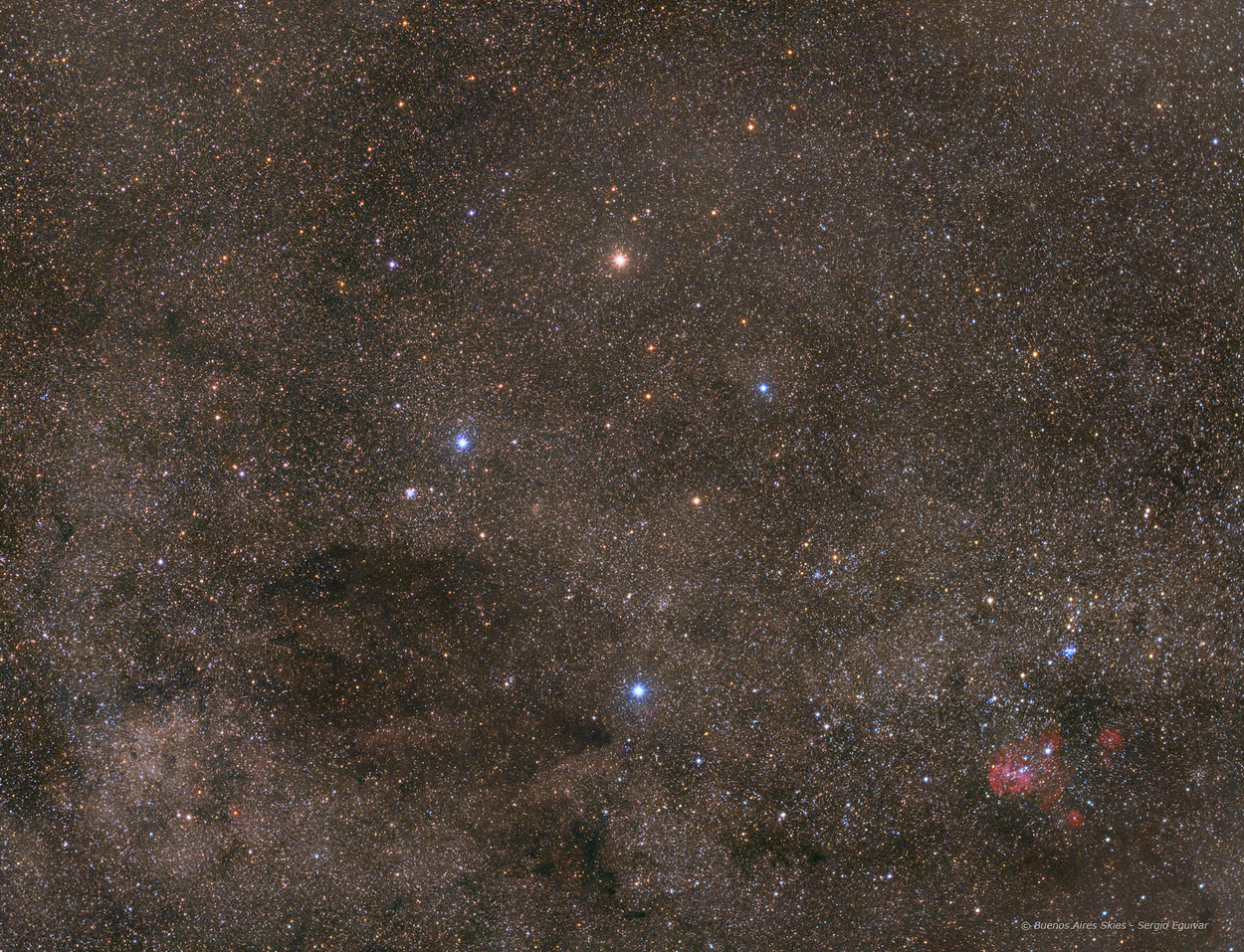
| HOME |
CRUX
Asterism - Constellation
(Image centered at: ra 12 h:29 m / dec - 59º 59')
CLICK THE IMAGE FOR A LARGE VIEW
April 2022, Home Backyard in Martínez, Buenos Aires, Argentina
DATA
TYPE: Asterism - Cosntellation
APPARENT DIAMETER: 8º 54' x 7º 27'
VISUAL: Naked eye
DISTANCE: Approximately 300 light years
IMAGE INFORMATION1
INSTRUMENT: CANON 50 mm 1,8 lens working at f4,5
CAMERA: QSI 583 WS
MOUNT: SKY WATCHER NEQ6
FILTERS: Baader LRGB Set
SKY CONDITIONS: urban skies
EXPOSURES: LRGB (40,40,40.,40)
OBJECT DESCRIPTION AND IMAGE SESSION
Finally one of the most iconic constellation or asterism of the southern hemisphere. It lies on the southern end of the Milky Way. The name Crux is Latin for cross. Even though it is the smallest of all 88 modern constellations, Crux is among the most easily distinguished as its four main stars each have an apparent visual magnitude brighter than +2.8. It has attained a high level of cultural significance in many Southern Hemisphere states and nations.
Blue-white alpha Crucis (Acrux) is the most southerly member of the constellation and, at magnitude 0.8, the brightest. The three other stars of the cross appear clockwise and in order of lessening magnitude: β Crucis (Mimosa), γ Crucis (Gacrux), and δ Crucis (Imai). ε Crucis (Ginan) also lies within the cross asterism. Many of these brighter stars are members of the Scorpius–Centaurus Association, a large but loose group of hot blue-white stars that appear to share common origins and motion across the southern Milky Way.
CRUX
Asterism - Constellation
Labeled